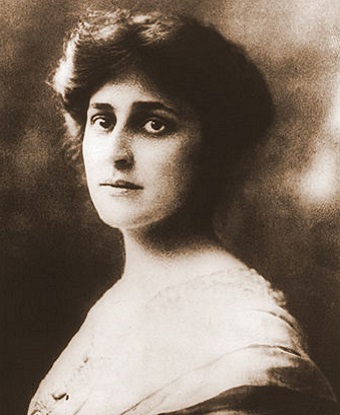Last updated: March 22, 2021
Person
Crystal Eastman

Courtesy Library of Congress. http://loc.gov/pictures/resource/cph.3b09749/
Crystal Eastman was one of the most visible Progressive reformers of the early twentieth century United States. She described herself as a “militant idealist.” She worked for suffrage and socialism and against war. Eastman was a feminist who believed that voting was only the starting point for the real work of liberating women. Throughout her life, she sought to forge links among the many causes and organizations she supported. She argued that building a better world required understanding the ways different forms of oppression overlap and reinforce each other. “Life is a big battle for the complete feminist,” she said in 1918. She was determined to win it.
Early Life and Education
Eastman earned a bachelor’s degree from Vassar College in 1903 and a master’s in sociology from Columbia University in 1904. She went on to get a law degree from New York University. She and her younger brother Max Eastman, with whom she was close her entire life, lived in the “bohemian” community of Greenwich Village alongside friends and colleagues like Inez Milholland and Doris Stevens. Eastman and Max would go on to start the socialist magazine The Liberator in 1918. The magazine published essays, art, fiction, and poems by prominent figures including Ernest Hemingway, Helen Keller, and Claude McKay.[1]
Reform Work
After graduating from law school, Eastman found work investigating labor conditions and workplace accidents in Pittsburgh, Pennsylvania. She published a book based on this study, Work Accidents and the Law (1910). Eastman drafted a workers’ compensation law for New York State that required employers to cover costs for injuries endured on the job. The law was the first of its kind in the country. The next year, 146 workers, mostly young women, died in the Triangle Shirtwaist Factory fire in New York City.[2] Their families received almost no compensation. After a public outcry, several states passed workers’ compensation laws based on Eastman’s model.
Eastman was also active in the suffrage movement. In 1912, she spearheaded a state suffrage campaign in Wisconsin. Its failure convinced her that the National American Woman Suffrage Association (NAWSA)’s state-by-state strategy was too slow. In 1913, she joined Alice Paul and Lucy Burns to found the Congressional Union (later the National Woman’s Party) to press for a suffrage amendment to the constitution.
Eastman was a committed peace activist. She and colleagues Jane Addams and Lillian Wald founded the Woman’s Peace Party (WPP, later the Women’s International League for Peace and Freedom) in 1915. The U.S.’s entry into World War I challenged the pacifist commitments of many Progressive reformers. Carrie Chapman Catt, another WPP founder and the leader of NAWSA, very reluctantly decided to support the war effort to advance the suffrage cause. Eastman stayed the course and added work founding the National Civil Liberties Bureau, to protect the rights of conscientious objectors to military service. This organization became the American Civil Liberties Union (ACLU). However, Eastman’s role in its founding was downplayed by the other male leadership, because she was recovering from a difficult pregnancy and childbirth and couldn’t attend early meetings.
“Now We Can Begin”
After the ratification of the 19th Amendment in 1920, Eastman set her sights on achieving full freedom for women. In a classic speech called “Now We Can Begin,” she laid out her vision. Now that the vote was won, women could say “what they are really after; and what they are after, in common with all the rest of the struggling world, is freedom.” Eastman called for equal pay for women workers and an end to employment discrimination. To advance that cause, she co-authored the Equal Rights Amendment with Alice Paul.
But Eastman didn’t stop there. She argued that women could never be truly equal in the wider world without equality in the home. Men needed to take on their fair share of housekeeping and childcare. Women needed to be able to control if and when they had children. The government and society should recognize and compensate domestic labor as essential work. In her speech, Eastman called for the kinds of changes that would become central to the second-wave feminist movement decades later.
Crystal Eastman was married twice. Her marriage to Wallace Benedict ended in divorce after Eastman learned of his infidelities. In 1916 she married Walter Fuller. The couple had two children, Jeffrey and Annis. Eastman died on July 28, 1928, from kidney disease. She was 48.
Notes
[1] The Ernest Hemingway House in Key West, Florida was designated a National Historic Landmark on November 24, 1968. Ivy Green, the birthplace of suffragist and disability activist Helen Keller located in Tuscumbia, Alabama, was designated a National Historic Landmark on August 25, 1970. Claude McKay was a Jamaican poet and writer who was a central figure in the Harlem Renaissance. The Harlem YMCA in New York City, where he lived from 1941 until 1946, was designated a National Historic Landmark on December 8, 1976.
[2] The Triangle Shirtwaist Factory was located on the 8th, 9th, and 10th floors of the Asch Building, 23-29 Washington Place, New York City. It was added to the National Register of Historic Places and designated a National Historic Landmark on July 17, 1991.
Bibliography
Aronson, Amy. Crystal Eastman: A Revolutionary Life. New York: Oxford University Press, 2019.
Eastman, Crystal. “Now We Can Begin,” 1920. https://awpc.cattcenter.iastate.edu/2017/03/09/now-we-can-begin-1920/.
Gornick, Vivian. “Now We Can Begin: Crystal Eastman’s Revolution.” The Nation, Dec. 16, 2019. https://www.thenation.com/article/archive/crystal-eastman-amy-aronson-book-review/.
Herman, Susan N. “Crystal Eastman, The ACLU’s Underappreciated Founding Mother.” ACLU.org. https://www.aclu.org/issues/free-speech/crystal-eastman-aclus-underappreciated-founding-mother
Article by Ella Wagner, Cultural Resources Office of Interpretation and Education.
